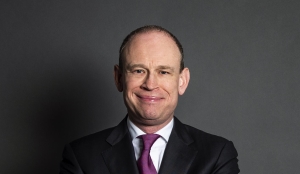Never two without three: Commission accepts jurisdiction over below-threshold concentrations under Article 22 Guidance
On 18 August 2023, following referral requests by several EU Member States, the European Commission (“Commission”) announced its decision to assess the acquisition by Qualcomm of Autotalks, an Israeli semiconductor manufacturer specialising in the development of chips enabling vehicle-to-everything (“V2X”) communications. Only three days later, the Commission accepted a referral by Denmark and Finland (joined by Sweden and Norway) concerning the European Energy Exchange’s (“EEX”) acquisition of Nasdaq Power, Nasdaq’s European power trading and clearing business. These back-to-back decisions are noteworthy as they are only the second and third example of the Commission accepting jurisdiction over concentrations that do not exceed the relevant EU and Member State notification thresholds.
To give some background, in March 2021, the Commission published its guidance on the application of Article 22 of the EU Merger Regulation (“EUMR”), which encourages national competition authorities to refer certain potentially anti-competitive transactions to the EU level, even where the EU and national thresholds are not met (“Article 22 Guidance”). This novel approach was applied for a first time by the French Competition Authority in the context of Illumina’s acquisition of GRAIL in April 2021. The referral ultimately resulted in the deal being blocked by the Commission. Following an appeal by the parties, the General Court accepted the Commission’s jurisdiction to review the concentration under the novel Article 22 Guidance in July 2022. The appeal against this judgment is currently pending before the Court of Justice.
Interestingly, despite having a handful of potential cases on its radar, the Commission seemed reluctant to accept further below-threshold transactions as no referrals had been made since the start of the Illumina/GRAIL saga. The Court of Justice’s forthcoming ruling on the legitimacy of the novel interpretation of Article 22 EUMR thus seemed to loom over the Commission as the sword of Damocles, impeding further referrals. The opening of the investigations into the Qualcomm/Autotalks and EEX/Nasdaq Power concentrations, however, takes away any doubt as to the Commission’s resolve to scrutinize below-threshold transactions under the novel interpretation of Article 22 EUMR, regardless of the pending review by the Court of Justice.
The opening of these investigations is a good wake-up call for undertakings to assess the risks of referral to the Commission for non-notifiable concentrations. Indeed, the possibility of a referral brings about a high level of uncertainty that forces the parties involved in a transaction to conduct a thorough competition assessment prior to closing.
More generally, following the Court of Justice’s seminal ruling in Towercast, and the subsequent application of this jurisprudence by the Belgian Competition Authority, it seems that enforcers have a widening toolbox at their disposal to assess mergers falling below the notification thresholds. This judgment confirmed that non-reportable concentrations may be appraised on the basis of the prohibition on abuse of dominance.
For more information, please contact Hein Hobbelen or Jonathan Saké.



